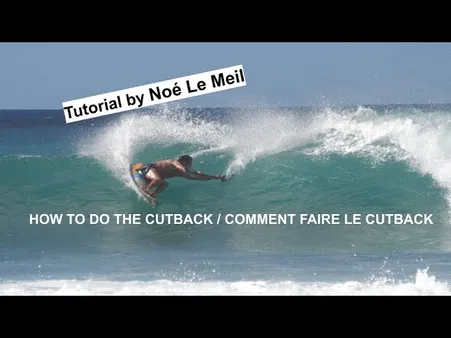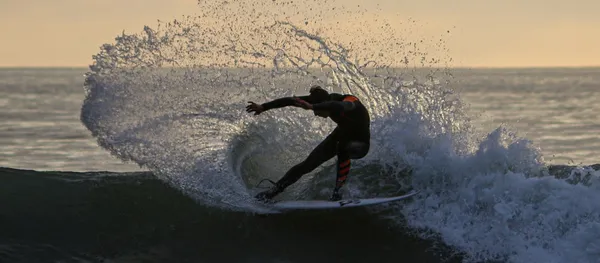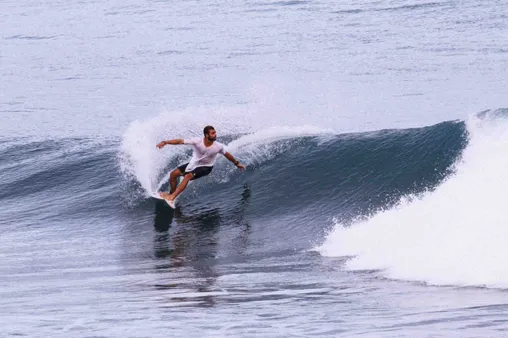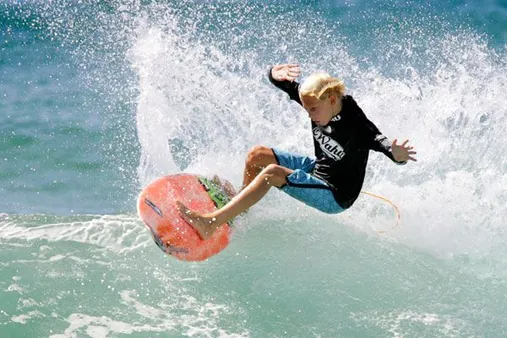Table of Contents
A cutback is a surfing maneuver that involves turning your board back towards the wave while maintaining your speed and control. It's a stylish and effective way to change direction, and it can be used to set up other maneuvers, such as a barrel ride or an air.
How to Do a Cutback: Master the Art of Turning on a Wave
I. How to Position Your Body
How to Position Your Body
1. Stand tall and relaxed with your weight evenly distributed on both feet.
- Bend your knees slightly, keeping your legs shoulder-width apart.
- Engage your core and maintain a natural arch in your lower back.
Read More: How to Do a Handstand
2. Place your feet shoulder-width apart, turned out slightly.
Your feet should be pointing slightly outward, about 15 degrees or so. This will give you a more stable base and help you to maintain your balance.
3. Bend your knees and lower your hips as if you are sitting back into a chair.
Your thighs should be parallel to the ground and your knees should be directly above your ankles.
Name | Description |
Surfboard | A board designed specifically for surfing, typically made of fiberglass or other composite materials. |
Leash | A cord that connects the surfer to the surfboard, preventing it from being swept away by the waves. |
Wetsuit | A full-body suit designed to keep surfers warm in cold water. |
Wax | A substance applied to the surfboard to provide traction for the surfer's feet. |
Fins | Removable fins that are attached to the bottom of the surfboard to provide stability and control. |
II. How to Shift Your Weight
How to Shift Your Weight
H3. Bend Your Knees
First, lower your body by bending your knees slightly. This will help you absorb the impact of the landing and make it easier to transition into the turn. The amount you need to bend your knees will depend on the speed and size of the wave you're riding. For smaller waves, you won't need to bend your knees as much. For bigger waves, you'll need to bend your knees more.
H3. Push Your Front Foot Forward
Next, push your front foot forward on the deck of your board. This will help you shift your weight forward and onto your front foot. The more you push your front foot forward, the more weight you'll shift onto it. This will help you carve the turn and keep your board from sliding out from under you.
H3. Roll Your Back Foot
Simultaneously with pushing your front foot forward, roll your back foot along the edge of the deck. This will help you shift your weight onto your back foot and complete the turn. The amount you need to roll your back foot will depend on the speed and size of the wave you're riding. For smaller waves, you won't need to roll your back foot as much. For bigger waves, you'll need to roll your back foot more.
H3. Keep Your Eyes on the Prize
Finally, keep your eyes on the prize! This means looking in the direction you want to go. If you look down at your feet or the water, you're more likely to lose your balance and fall. So keep your head up and your eyes on the prize, and you'll be able to shift your weight and carve your turns with ease.
- Bend your knees to absorb impact and make it easier to transition.
- Push your front foot forward to shift weight forward and carve the turn.
- Roll your back foot to complete the turn.
- Keep your eyes on the prize and look in the direction you want to go.
III. How to Turn Your Board
How to Turn Your Board
Preparation is key when it comes to turning your board. Make sure your stance is wide and comfortable, with your feet shoulder-width apart. Bend your knees slightly and lower your center of gravity to create a stable base.
To initiate the turn, lean your weight onto your front foot and press down on your toes. As your weight shifts forward, lift your back foot slightly off the board and pivot it in the direction you want to go. Keep your eyes focused on where you want to go, not at your feet.
3. Weight Transfer
As you pivot your back foot, start to transfer your weight from your front foot to your back foot. Apply pressure to the ball of your back foot as you push down and extend your leg. This will help you to complete the turn and maintain your balance.
Step | Description |
|---|---|
1 | Position yourself on the board with a wide, shoulder-width stance. |
2 | Bend your knees slightly and lower your center of gravity. |
3 | Initiate the turn by leaning your weight onto your front foot and pressing down on your toes. |
4 | Lift your back foot slightly off the board and pivot it in the direction you want to go. |
5 | Transfer your weight from your front foot to your back foot as you push down and extend your leg. |
4. Look Where You Want to Go
As you're turning, keep your eyes focused on where you want to go, rather than down at your feet. This will help you to maintain your balance and stay in control of your board.
As you complete the turn, shift your weight back to your front foot and bring your back foot back to the board. Keep your knees bent and your body relaxed, ready to react to any changes in the conditions.
Tips for Turning Your Board
- Practice makes perfect. The more you practice turning, the better you'll get at it. Start by practicing on small waves, and gradually work your way up to bigger waves as you gain confidence.
- Start small. Don't try to turn too much at once. Start by making small, controlled turns, and gradually increase the size of your turns as you become more comfortable.
- Be patient. Learning to turn takes time and practice. Don't get discouraged if you don't see results immediately. Just keep practicing and you'll eventually get the hang of it.
- Have fun! Turning your board is a great way to enjoy surfing. Once you've mastered the basics, you can start to experiment with different turn variations and styles. Browse our related post: How to Do an Aerial
IV. How to Practice Cutbacks
How to Practice Cutbacks
1. Start Small
When you're first starting out, it's best to start small. Don't try to do a full-on cutback right away. Instead, focus on practicing the basic steps of the maneuver. This includes positioning yourself correctly, initiating the turn, and transferring your weight. Once you've mastered the basics, you can start to gradually increase the size of your cutbacks.
Here are some tips for practicing cutbacks:
- Start in a small, controlled environment, such as a swimming pool or a calm beach.
- Use a surfboard that is appropriate for your skill level and size.
- Wear a life jacket and a helmet for safety.
- Practice the basic steps of the maneuver slowly and deliberately.
- Don't be afraid to make mistakes. Everyone makes mistakes when they're learning.
- Have fun! Cutbacks are a great way to improve your surfing skills and have a lot of fun.
How to Choose the Right Surfboard for Your Skill Level and Style
2. Be Patient
Learning how to do a cutback takes time and practice. Don't get discouraged if you don't get it right away. Just keep practicing and you'll eventually get the hang of it. Here are some tips for being patient:
- Set realistic goals for yourself. Don't try to learn everything all at once.
- Break down the maneuver into smaller steps and focus on one step at a time.
- Don't be afraid to ask for help from a friend, family member, or surf instructor.
- Keep practicing, even when it's challenging. The more you practice, the better you'll become.
The Benefits of Surfing for Fitness and Fun
3. Have Fun!
Cutbacks are a great way to improve your surfing skills and have a lot of fun. So don't take yourself too seriously. Just relax, have fun, and enjoy the ride.
The Best Surfing Equipment and Accessories
Mistake | How to Avoid It |
Not Looking Where You Want to Go | Keep your eyes focused on where you want to go, not at your feet. |
Leaning Back Too Far | Keep your weight centered over the board. |
Not Transferring Your Weight Properly | Transfer your weight from your front foot to your back foot as you initiate the turn. |
Going Too Fast | Start slowly and gradually increase your speed as you get more comfortable. |
Not Committing to the Turn | Once you start the turn, commit to it and don't let go. |
How to Improve Your Balance, Coordination, and Endurance with Surfing
V. Conclusion
Mastering the cutback is a rewarding experience that will open up new possibilities in your surfing. With practice, you'll be able to perform cutbacks smoothly and stylishly, allowing you to change direction quickly and easily. So get out there, practice, and have fun! And remember, the most important thing is to enjoy the ride.